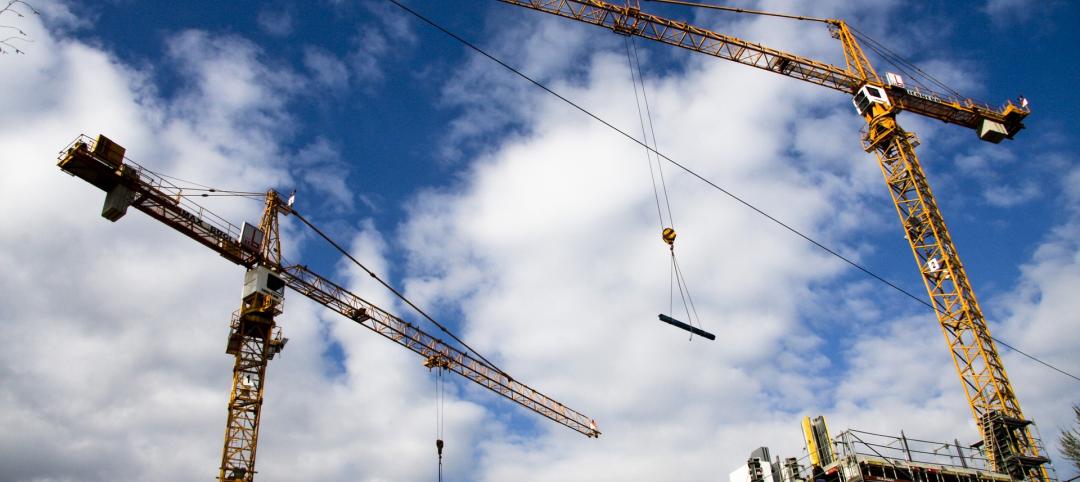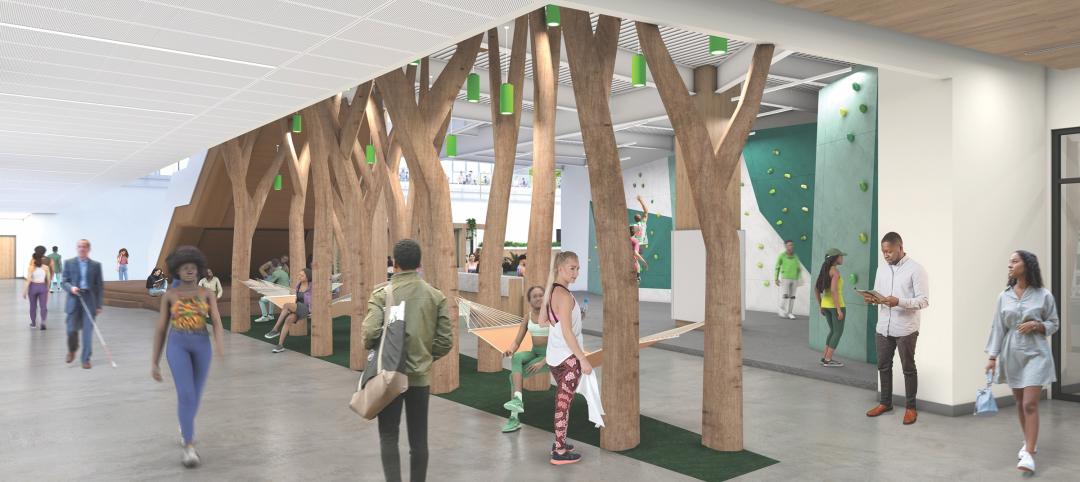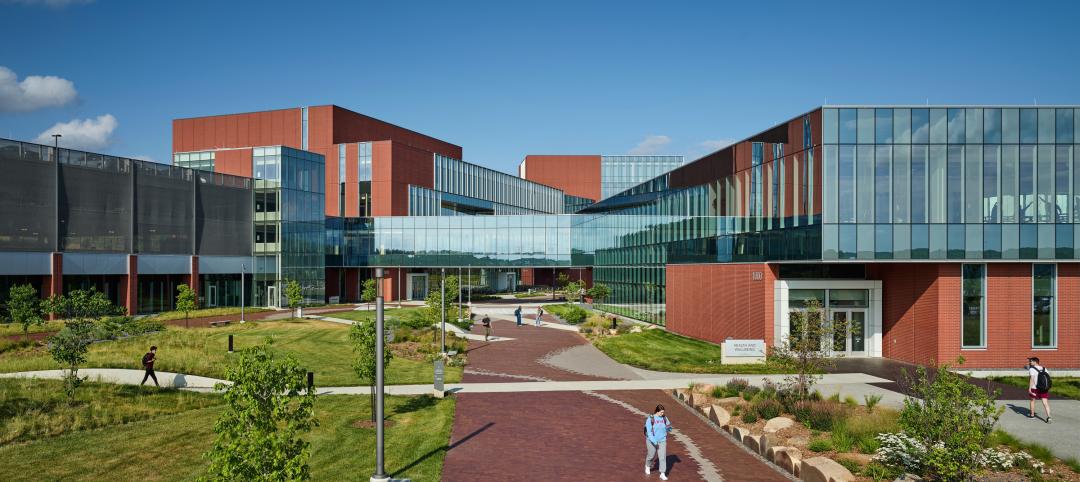Walking the talk. It’s a phrase we’ve all heard and one that gives you a no-bones-about-it proof point. In Knauf Insulation’s case, walking the talk provided the organization with a comprehensive, better-educated green building vantage point – and proof point – when it came time to take a big step in sustainable development.
In 2007 after fire destroyed an office building on the Knauf Insulation corporate campus in Shelbyville, Ind., Knauf targeted, and in 2010, earned U.S. Green Building Council LEED-NC Gold certification for a new 24,860 sq. ft. corporate engineering office building. This provided Knauf with both a challenge and a tremendous opportunity. We became a more active player because of this experience due to the fact that LEED buildings are now pervasive.
Here are two proof points for the growth in green building: more than 40,000 projects are currently participating in the commercial and institutional LEED rating systems, comprising more than 8.3 billion square feet of construction space across the U.S. and in 120 countries; green building is projected to contribute $554 billion to the U.S. gross domestic product for the period 2009 to 2013.
In walking the talk, Knauf experienced the trends and desires that sustainable-minded end-users are after: increased energy cost-savings, enhanced indoor environmental quality and social benefits with responsible resource use and manufacturing. Now, we have a building that is 38 percent more energy efficient than a typical building, which also uses much less water. While we continue to be proud of the ways that the company’s products and processes touch the industrial, commercial and residential markets to create enhanced sustainability, it’s important to note that everything in our sustainable development has been extremely cost-effective. We haven’t had to spend a lot of green to be green.
Sustainability benchmarks like LEED certification are becoming a real target for users of commercial and industrial insulation products - and may even be the right aspiration for your organization.
Working for more insulation credits
There is a point of contention with the USGBC and LEED credits certification - most of the time, all the pipe and duct insulation that goes into a commercial building is part of the mechanical contract. Therefore, it’s not individually considered or singled-out with regard to being available for LEED credit. This is something Knauf Insulation is working on to make commercial builders more aware of the impact of insulation, because if you don’t bid the insulation outside the mechanical contract, you can’t go in and get the recycled content value for the insulation or the renewable resource value that could be in your insulation.
The only way now that the mechanical products can have an impact outside of the building performance, and actually bring in a material and resources credit, is to be considered as a separate contract. We’ve been in communication with the USGBC regarding this particular aspect: getting credit for items like duct and pipe insulation because they have such a huge benefit with their sustainability attributes should be a foregone conclusion.
LEED-ing by example
Our LEED example illustrates that simply the everyday products you use can make a significant green difference to building owners, operators and occupants. We have Knauf Insulation R-40 walls in our building, much more than in a typical building. Using an extraordinary amount of insulation in the walls helped us meet our day-lighting targets.
Today, our insulation also has 55.7% post-consumer recycled content. That in itself is a huge social benefit, but that figure also generates a critical result with manufacturing savings – it allows Knauf to use 15% less energy in manufacturing insulation products. There is perhaps no more noble sustainability story than using post-consumer content to save energy in homes and buildings.
The manufacturing energy example also speaks directly to our pipe insulation regarding embodied energy recovery. When you really examine it, it’s miraculous how much energy you can save per lineal foot of pipe insulation. In about one day, a lineal foot of pipe insulation recovers the energy that it took to manufacture that foot of insulation. And the energy savings are similar with cold pipes; in a day or two, the embodied manufacturing energy is recovered. Insulation is essentially perpetual in what it does. Once the embodied energy is paid back, insulation just keeps saving energy, reducing carbon emission, and saving water via reduced demand on power plants.
Another example from our building is the maximization of daylighting and the minimization of electric lighting. Motion sensors shut off lights when there’s no movement in a room. In the Knauf Auditorium event/training space, heat and ventilation do not turn on unless carbon dioxide sensors recognize the respiration and presence of people using the room. Sustainable features also include water-saving plumbing fixtures and a white membrane roof that minimizes the heat island effect.
Manufacturing trends
The recycled content I mentioned is something that Knauf Insulation is very proud of, but perhaps the most important step in our sustainable development was switching to a bio-based binder (the material that gives our product shape) known as Ecose TechnologyTM, which speaks also to a growing trend with green chemistry, bio-formulations and finding ways to reduce dependency on fossil fuels and fossil-based additives. The 2.5% LEED credit for utilizing rapidly renewable resources is one of the harder LEED credits to get.
For our manufacturing process, we use Knauf family farms that actually grow the same amount of crop that we use for our bio-based binder production. Never in my career did I think I would be interested in sustainable agriculture. It’s important for organizations to actually consider that perspective of looking at alternate ways to source materials. It’s a very positive social aspect of the market transformation toward greener buildings.
Asking the right questions
Sustainable building is the result of the desire and patience to ask the right questions and find the right answers. It makes sense to simulate a building hundreds of times on a computer before you build it to really have a good idea of how it’s going to perform. On the other end of the spectrum, there are still people out there insulating an industrial process to deliver functionality, but not energy efficiency. They’re not designing it to optimum techno-economic performance; there could be a better economic thickness that would use less fuel and deliver fast payback.
More owners and operators of green structures and facilities here and abroad are getting terrific buildings that simply perform better. Realistically, it is also naïve to think that there isn’t skepticism around potentially adding cost to building construction.
For someone constructing a building, if it all comes down to 5 or 10 percent more cost to do a smarter building, and that’s your primary motivator, part of the thought process should be considering the future possibility of not being able to buy fossil fuels any longer – or what if a geopolitical event were to halt the availability of fossil fuel for the U.S. economy? Extending this scenario, if renewable energy is also a future consideration, it may then be too expensive if you haven’t designed your building to perform as well as it possibly can. You would be dealing with the cost of wasted energy.
Energy efficiency is completely critical when you start thinking about renewable energy sources and the probability of success. This is one current difference between the U.S. and Europe, where infrastructure is more rapidly becoming as energy-efficient as possible. In Europe, if you have a building, there’s a built-in incentive to insulate and make a building perform as well as it possibly can. Savings are that much greater and give renewable energy sources a better chance to succeed
Additional advantages
Chief results of sustainable building are resource efficiency and energy efficiency - long-term reducers of cost. There are also additional advantages which may not be so straightforwardly tangible to some, such as comfort. A pleasant work environment is a productive one. In our LEED building, individuals have a three-degree control over their individual office. Compare this to a building that both performs poorly and offers no adjustability for individual spaces; there you might see a haphazard array of space heaters or fans. Space heaters and fans are symptoms of poor-performing buildings.
Like many other LEED-certified buildings, we also have an exercise facility. If you look at healthcare expenses, promoting wellness is both good for employees and employers.
Productivity and comfort may also be enhanced because of acoustics. Since we took our insulation up all the way through the ceiling, you don’t get crosstalk or disruptive noise between offices. Acoustics is one way you can use insulation as an advanced strategy to earn innovation points via LEED certification.
The triple bottom line
When I think about my grandchildren and future generations, I know sustainable choices are the right choices. And they’re often easy choices to make for practical economics, environmental health and for our communities.
Here’s how simple sustainability really is. We take curbside recycling which gets transported by train to our facility, so we can decrease landfilling and the use of virgin resources and also use energy-efficient transportation. We then turn that recycled content into insulation that helps save energy. It’s not any harder than how you’d strategize through a different business operation, but it is the right thing to do and it’s financially viable. +
--
Scott Miller is director of sustainability at Knauf Insulation. With more than 30 years of product assessment and testing experience, Scott is an insulation performance expert with a special focus on sustainability. He holds many insulation product patents and is very active in industry associations such as NAIMA, ASHRAE and ASTM.
Related Stories
Construction Costs | Oct 16, 2024
Construction Crane Index: Most major markets’ crane counts increase or hold steady in third quarter
Rider Levett Bucknall’s (RLB’s) latest Crane Index and Quarterly Cost Report shows continued decreasing cost inflation and crane counts increasing or holding steady in 10 of the 14 major markets it surveyed. The national average increase in construction costs was 1.07%, the lowest it’s been in the last three years.
AEC Tech | Oct 16, 2024
How AI can augment the design visualization process
Blog author Tim Beecken, AIA, uses the design of an airport as a case-study for AI’s potential in design visualizations.
University Buildings | Oct 15, 2024
Recreation and wellness are bedfellows in new campus student centers
Student demands for amenities and services that address their emotional and mental wellbeing are impacting new development on college campuses that has led to recreation centers with wellness portfolios.
Higher Education | Oct 14, 2024
Higher education design for the first-gen college student
In this Design Collaborative blog, Yogen Solanki, Assoc. AIA, shares how architecture and design can help higher education institutions address some of the challenges faced by first-generation students.
Performing Arts Centers | Oct 10, 2024
Studio Gang's performing arts center for Hudson Valley Shakespeare breaks ground
A new permanent home for Hudson Valley Shakespeare, a professional non-profit theater company, recently broke ground in Garrison, N.Y. The Samuel H. Scripps Theater Center includes a 14,850 sf performance venue that will serve as a permanent home for the theater company known for its sweeping open-air productions of classics and new works.
Sustainable Design and Construction | Oct 10, 2024
Northglenn, a Denver suburb, opens a net zero, all-electric city hall with a mass timber structure
Northglenn, Colo., a Denver suburb, has opened the new Northglenn City Hall—a net zero, fully electric building with a mass timber structure. The 32,600-sf, $33.7 million building houses 60 city staffers. Designed by Anderson Mason Dale Architects, Northglenn City Hall is set to become the first municipal building in Colorado, and one of the first in the country, to achieve the Core certification: a green building rating system overseen by the International Living Future Institute.
3D Printing | Oct 9, 2024
3D-printed construction milestones take shape in Tennessee and Texas
Two notable 3D-printed projects mark milestones in the new construction technique of “printing” structures with specialized concrete. In Athens, Tennessee, Walmart hired Alquist 3D to build a 20-foot-high store expansion, one of the largest freestanding 3D-printed commercial concrete structures in the U.S. In Marfa, Texas, the world’s first 3D-printed hotel is under construction at an existing hotel and campground site.
University Buildings | Oct 9, 2024
Des Moines University Medicine and Health Sciences opens a new 88-acre campus
Des Moines University Medicine and Health Sciences has opened a new campus spanning 88 acres, over three times larger than its previous location. Designed by RDG Planning & Design and built by Turner Construction, the $260 million campus features technology-rich, flexible educational spaces that promote innovative teaching methods, expand research activity, and enhance clinical services. The campus includes four buildings connected with elevated pathways and totaling 382,000 sf.
Student Housing | Oct 9, 2024
University of Maryland begins work on $148 million graduate student housing development
The University of Maryland, in partnership with Campus Apartments and Mosaic Development Partners, has broken ground on a $148.75 million graduate student housing project on the university’s flagship College Park campus. The project will add 741 beds in 465 fully furnished apartments.
Healthcare Facilities | Oct 9, 2024
How healthcare operations inform design
Amanda Fisher, Communications Specialist, shares how BWBR's personalized approach and specialized experience can make a meaningful impact to healthcare facilities.

















